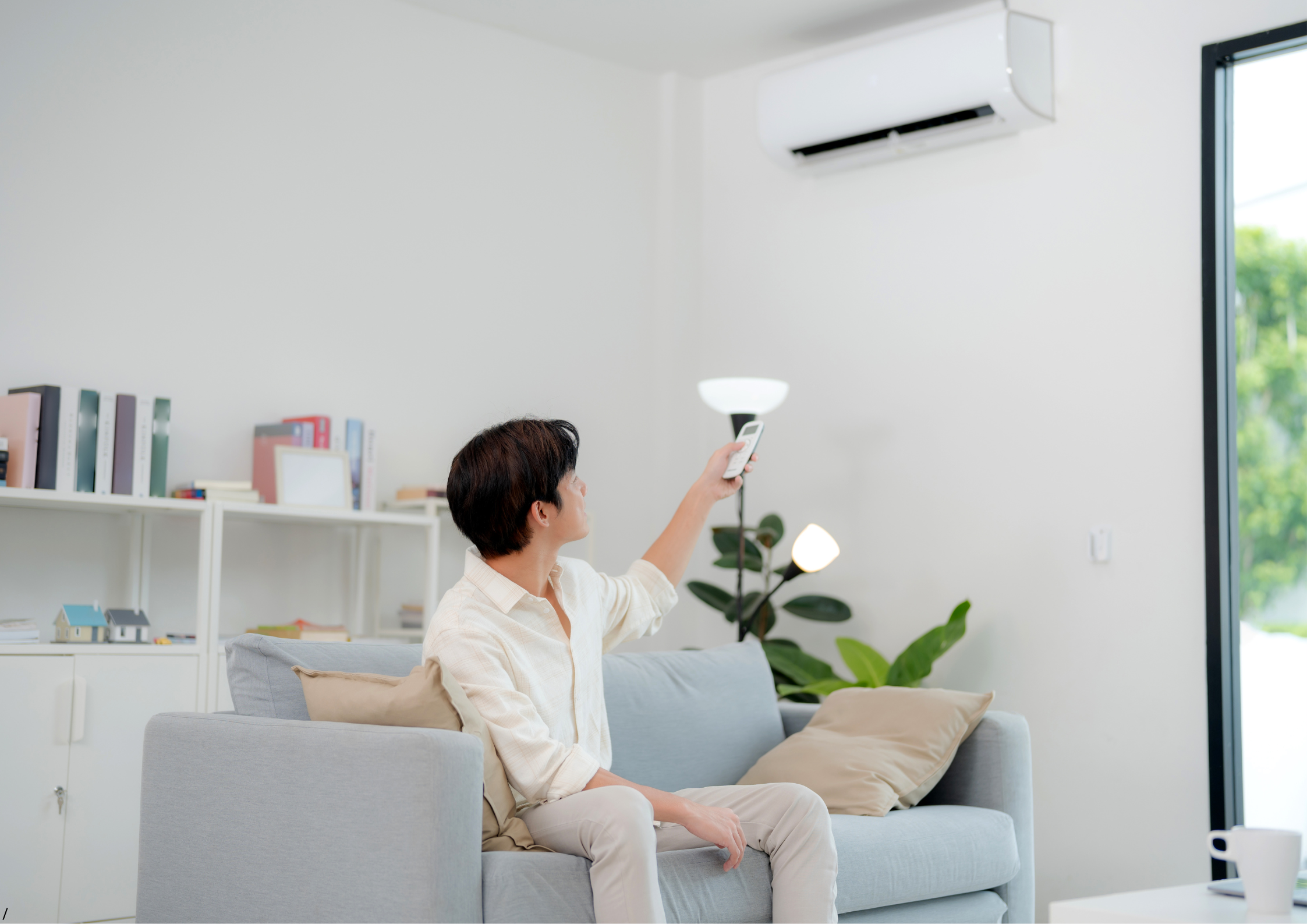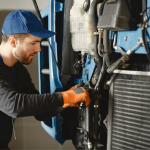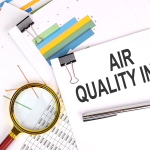Do Air Purifiers Help with Allergies?
Struggling with constant sneezing, watery eyes, itchy throat, or nasal congestion inside your home? You might be missing the root cause: poor indoor air quality and airborne allergens. The good news? Improving your home’s air quality is more achievable than you realize. One proven solution that delivers real relief: HEPA air purifiers. But do air purifiers truly help with seasonal allergies, pet dander, and dust mites? Let’s explore the science behind air filtration and how these devices can transform your indoor environment and provide allergy relief for your Sachse, Texas home.
How Do Air Purifiers Work?
Air purifiers use filters and technologies to remove pollutants, allergens, and contaminants from the air. They capture tiny particles that could be triggering your allergies, such as:
- Dust and dust mites
- Pollen from trees, grass, and flowers
- Pet Allergins
- Mold spores
- Smoke and volatile organic compounds (VOCs)
By reducing these airborne irritants, an air purifier can significantly improve your home’s air quality and make allergy season a little more bearable.
The Science Behind Air Purifiers and Allergies
Studies show that air purifiers can help alleviate allergy symptoms by reducing airborne allergens. According to the Environmental Protection Agency (EPA), High-Efficiency Particulate Air (HEPA) filters can remove up to 99.97% of particles as small as 0.3 microns. This means cleaner, healthier air for your family.
HEPA Filters and Their Role
HEPA filters are highly effective at trapping indoor air pollutants. These filters can remove:
- Dust mites and other fine particles
- Pollen
- Mold spores
- Harmful chemicals from household cleaning supplies
Using a HEPA filter in your HVAC system or a portable air cleaner can drastically improve indoor air quality and reduce allergy symptoms.
Indoor Air Quality Solutions for Allergy Relief
Indoor air pollution is a significant health risk, especially for those with respiratory conditions like asthma. Poor indoor air quality can be caused by:
- Cooking fumes from gas stoves
- Tobacco smoke
- Volatile organic compounds from paint stripping and cleaning products
- Mold growth in damp areas
- Air fresheners and other pollutants
Cleaner Air Starts Here: The Benefits of Using Air Purifiers
Common indoor pollutants—including fine particles from combustion sources, household chemicals, biological allergens, and poor ventilation—can spark immediate allergic responses and asthma episodes while causing long-term respiratory damage with repeated exposure. Using an air cleaner is an effective way to remove many of these harmful particulates, significantly reducing the risk of both immediate and chronic health problems associated with poor indoor air quality.
Solutions to Reduce Indoor Air Pollutants
To improve air quality in your home, consider the following:
- Install HEPA air purifiers for maximum particle removal
- Increase natural ventilation by opening windows and doors often
- Deep-clean your environment by regularly cleaning air ducts and using a HEPA vacuum on carpets.
- Minimize pet allergens through frequent grooming.
- Prevent mold growth by keeping all damp areas thoroughly dry.
How Outdoor Air Pollution Affects Your Indoor Environment
Don’t assume your home is safe from outdoor contaminants. External air pollution—including vehicle exhaust, factory emissions, wildfire smoke, and seasonal pollen—can easily infiltrate your living spaces through open windows, doors, and ventilation systems. By checking your local air quality index (AQI) regularly and implementing protective measures like air purification systems and proper ventilation control, you can significantly reduce the impact of outdoor pollutants on your indoor air quality.
Ways to Minimize Outdoor Pollutants Indoors
Outdoor pollutants like dust, pollen, and vehicle emissions can easily enter your home. Here are effective ways to reduce their impact and keep your indoor air cleaner.
- Keep windows and doors closed during high-pollution or high-pollen days to prevent outdoor contaminants from entering.
- Use portable air purifiers with activated carbon and HEPA filters to capture fine particles, smoke, and odors.
- Upgrade your HVAC system with high-efficiency filters to improve indoor air quality year-round.
- Reduce indoor pollution sources by limiting the use of gas stoves or appliances that emit fumes.
Additional Steps to Improve Indoor Air Quality

Investing in an Efficient HVAC System
A well-maintained HVAC system plays a crucial role in ensuring good air quality. Regularly changing air filters and scheduling routine maintenance can improve air flow and reduce harmful particles in the air indoors.
Using Indoor Plants
Certain indoor plants can help remove volatile organic compounds and improve indoor air quality naturally. However, be mindful that some plants can also contribute to mold growth if not properly maintained.
Avoiding Harmful Chemicals
Reduce exposure to harmful chemicals by choosing non-toxic cleaning supplies, minimizing air freshener use, and avoiding tobacco smoke indoors. The American Lung Association recommends using environmentally friendly products to maintain clean indoor air.
Conclusion: Do Air Purifiers Really Help?
Yes! Air purifiers can significantly improve overall air quality and help reduce allergy symptoms by filtering out air pollutants, pet dander, and other allergens. However, combining air purifiers with proper ventilation, HVAC maintenance, and other clean air strategies will yield the best results.
Taking proactive steps to improve indoor air quality in your home can reduce health hazards, prevent asthma attacks, and promote better respiratory health. Whether you’re in Sachse, Texas, or anywhere else, investing in air cleaners and improving air circulation will help you breathe easier every day.
|
Common Indoor Allergens |
Air Purifier Effectiveness |
| Pollen | Removes up to 99.9% |
| Dust Mites | Removes up to 99.97% |
| Pet Dander | Removes up to 99.9% |
| Mold Spores | Removes up to 99.97% |
| Smoke & VOCs | Reduces significantly |
Sachse, Texas, with its blend of urban and suburban areas, our region often experiences elevated pollen and dust levels, posing challenges for local residents.
Who Needs an Air Purifier?
If you live in Sachse, Texas, or nearby communities, you might want to consider an air purifier if:
- You or your family members suffer from seasonal allergies
- You have pets that shed dander
- You live near busy roads or industrial areas where pollution levels may be higher
- Your home has poor ventilation, leading to stagnant air
- You experience frequent coughing, sneezing, or respiratory issues
With pollen levels varying throughout the year, an air purifier can be a year-round investment in your health and comfort.
The Best Air Purifiers for Allergy Relief
When shopping for an air purifier, consider these key features:
- HEPA Filters – The gold standard for trapping allergens
- Activated Carbon Filters – Helps remove odors and chemical pollutants
- UV-C Light – Kills bacteria, viruses, and mold spores
- CADR Rating – Measures the purifier’s efficiency at cleaning air
For homes in Sachse, Texas, choosing a purifier with high efficiency can make all the difference in tackling local allergens.
Why Sachse Residents Need an Indoor Air Quality Fix
Your Home’s HVAC System & Dust Circulation
Many Sachse homes have central heating and cooling systems that constantly circulate dust, pet dander, and external allergens. An Indoor Air Quality fix (like advanced air purification or filtration) is essential to remove these pollutants and prevent them from recirculating through your home.
Gated Communities & Trapped Pollutants
Newer and gated communities in Sachse often feature tightly sealed, energy-efficient homes. While great for insulation, this can trap a high concentration of indoor pollutants (VOCs, mold spores, and viruses) inside. An IAQ solution helps vent and purify this stale, contaminated air.
Local Churches & Airborne Allergens
Churches and other gathering spaces often host large numbers of people in a single building. High foot traffic and gathering volume can significantly increase airborne particles and allergens. Improving the indoor air quality in these buildings helps protect everyone who attends.
Sachse Parks & Seasonal Pollen Influx
Enjoying Sachse’s local parks, like Heritage Park, is a benefit of living here. However, your clothing and pets track pollen from the outdoors directly into your home. An IAQ system provides a defensive barrier, neutralizing the seasonal pollen and outdoor air contaminants that make their way inside.
Local Festivals & Stirred-Up Dust
Events like the annual Sachse Fallfest temporarily stir up large amounts of dust and outdoor allergens. When you return home, these particles cling to you and quickly degrade your indoor air. A whole-house air quality fix ensures your home remains a clean-air sanctuary regardless of outdoor activity.
Ready to Breathe Easier? Get the Complete IAQ Solution
An air purifier is a valuable tool, but to secure the best indoor air quality in Sachse, you need more than a single machine. You need a trusted partner who understands how your home’s whole system works.
Equal Heat & Air provides that complete solution. We focus on diagnosing and fixing the root causes of poor air, not just the symptoms. Our expert services—including HVAC maintenance, air purification systems, and duct cleaning—are tailored to ensure your air is clean, safe, and breathable. Let our team deliver the lasting comfort and health your family deserves.
Don’t let allergies take over your home—contact Equal Heat & Air today athttps://equalheatandair.com/ and start breathing easier!


